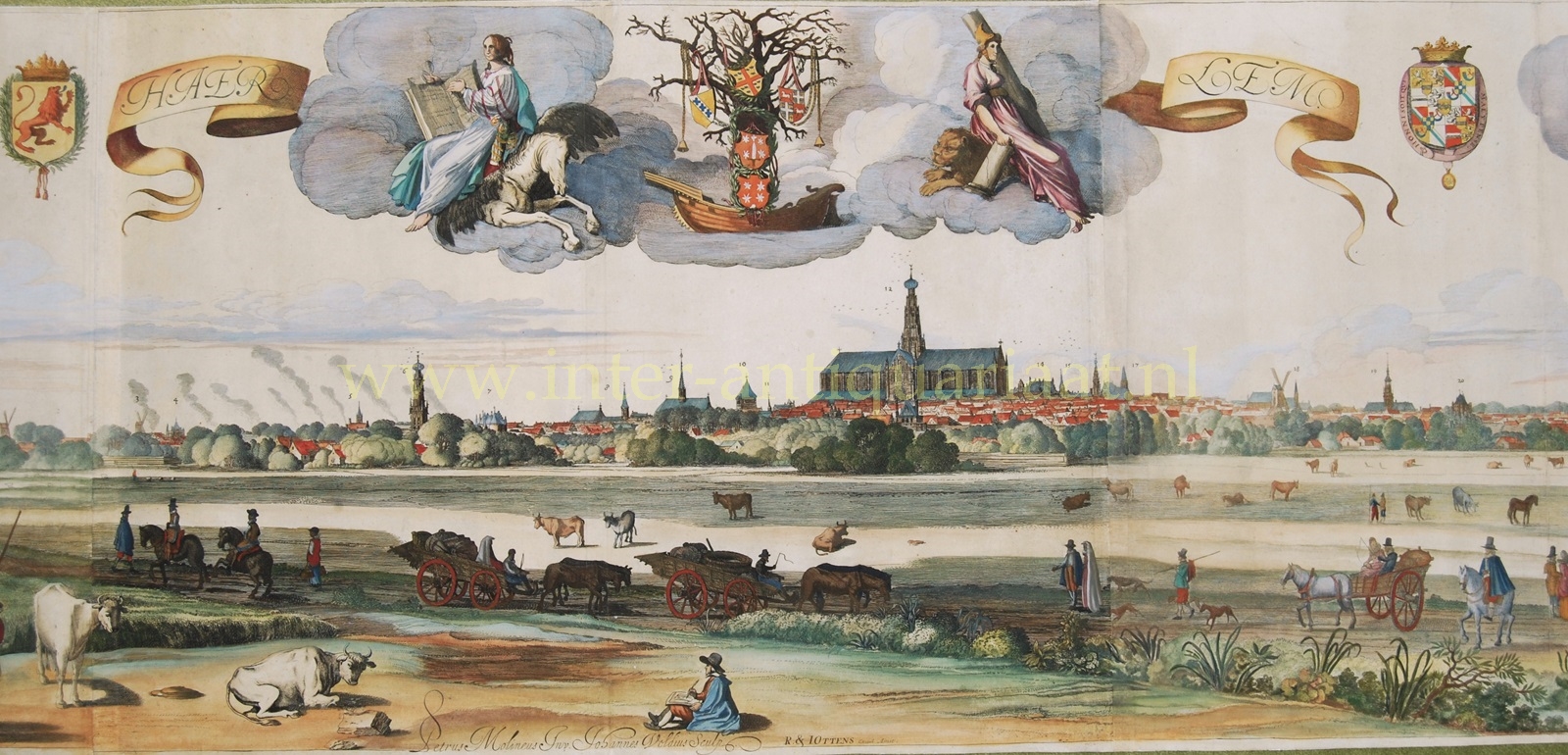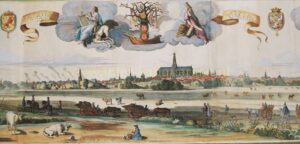Haarlem – Jan van der Velde after Pieter de Molijn, 1726-1766
€6.500
LARGE 17THE CENTURY VIEW OF HAARLEM
“HAER-LEM” copper engraving made by Jan van de Velde after a drawing by Pieter de Molijn. Published in Amsterdam by Reinier and Joshua Ottens between 1726-1766. The engraving consists of 3 joined sheets, measuring a total of 41 x 169.2 cm. Coloured by a later hand. Signatures at the center bottom: Petrus Molineus Inv.; Johannes Veldius sculp.; R. & I. Ottens Excud. Amst.
The first state of the engraving was published in 1621 in Haarlem by David van Horenbeeck. This is the second edition.
We see Haarlem from the north, with the Grote or St. Bavo Kerk centrally located and the Kleverlaan in the foreground. On the far left, the ruins of Huis ter Kleef castle are visible, next to a farm on Het Zieken (present-day Kennemerstraat) and the tower of the former Leper, Plague, and Madhouse (today’s Museum van de Geest). On the far right, one of the windmills on Zijlweg is depicted.
In Pieter de Molijn’s compositions (London 1595-1661 Haarlem), figures always stand out prominently against the surroundings. On the left foreground, we see several men and cows. On Kleverlaan, there are horse-drawn carts, riders, and pedestrians. In the middle, an artist sketches Huis ter Kleef, presumably De Molijn himself who secured a place in this view.
Dutch landscape painting in the 17th century predominantly revolved around Haarlem. Civilian outdoor leisure, such as riding in “play wagons,” visiting countryside inns, village fairs, and walking, was a favorite subject. In the relatively safe Dutch countryside, endless walks were taken, while in other European cities, residents were more cautious about leaving the city limits.
Above the view of Haarlem from left to right, the coat of arms of Haarlem held by two sea monsters, the coat of arms of Holland, a woman seated on a winged horse (poetry?), the withered tree with the coats of arms of Haarlem on a vessel with a saw on the bow (symbolizing the conquest of Damiate by some members of Haarlem families whose coat of arms hang in the tree), then a woman seated on a lion holding pillars, symbolizing strength. Next is the coat of arms of Prince Maurits and finally, the old coat of arms of Haarlem held by two heavily-haired men.
The cartouche at the bottom right contains a dedication to the city council of Haarlem in Latin and Greek by Samuel Ampzing and David van Horenbeeck, surrounded by various objects in which we should recognize Haarlem, such as weapons, armor, music, musical instruments, books, palettes and brushes, the sword of justice, flags, items related to the textile industry and bleaching, and at the very bottom right, a beer barrel and a tulip.
Price: Euro 6.500,- (including frame)









